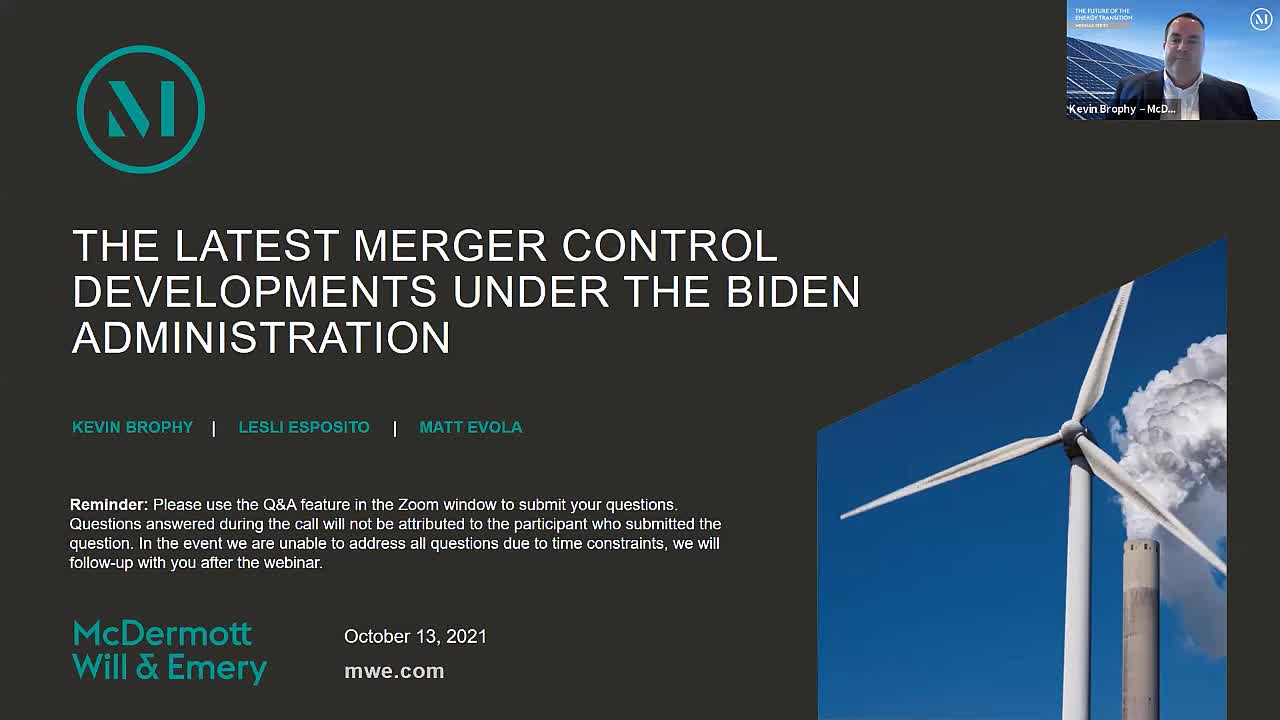On October 13, 2021, during a speech at American Clean Power’s Offshore WINDPOWER Conference & Exhibition, US Department of the Interior Secretary Deb Haaland announced a path forward for future offshore wind leasing along the US coastline. This announcement supports the Biden administration’s goal to install 30 gigawatts of offshore wind energy by 2030 and comes approximately five months after the Biden administration approved the 800 megawatt Vineyard Wind Project.
“The Interior Department is laying out an ambitious roadmap as we advance the Administration’s plans to confront climate change, create good-paying jobs, and accelerate the nation’s transition to a cleaner energy future,” Secretary Haaland said. As part of this roadmap, Secretary Haaland also announced plans for the Bureau of Ocean Energy Management (BOEM) to potentially offer up to seven new offshore lease sales by 2025 in the Gulf of Maine, New York Bight, Central Atlantic, Gulf of Mexico and offshore the Carolinas, California and Oregon.
Secretary Haaland shared that the Interior Department’s “timetable provides two crucial ingredients for success: increased certainty and transparency. Together, we will meet our clean energy goals while addressing the needs of other ocean users and potentially impacted communities. We have big goals to achieve a clean energy economy and [the Department of] Interior is meeting the moment.”
BOEM Director Amanda Lefton advised, “[w]e are working to facilitate a pipeline of projects that will establish confidence for the offshore wind industry…At the same time, we want to reduce potential conflicts as much as we can while meeting the Administration’s goal to deploy 30 gigawatts of offshore wind by 2030. This means we will engage early and often with all stakeholders prior to identifying new Wind Energy Areas.”
As we move closer to 2030, industry investors and developers should expect to see a steady increase of offshore wind activity due to the recent announcements and the Investment Tax Credit for projects that will start construction before 2026.
read more

 Subscribe
Subscribe Below are key takeaways from the webinar: 1. Antitrust Agency Personnel Changes. The FTC and the DOJ Antitrust Division have recently seen leadership changes. At the FTC, US President Joe Biden appointed Lina Khan to chair, and she’s already making headlines for her efforts to “modernize” merger assessments. Chairwoman Khan has indicated that she wants the FTC to focus on addressing the “rampant consolidation” that has resulted in dominant firms across markets. She has also advocated for a holistic approach to identifying harms, a focus on power asymmetries and a need for the agency to be forward-looking. The changes she has implemented have significantly impacted merger review. At the DOJ, President Biden appointed Jonathan Kanter, who has not yet taken office but is also expected to take an aggressive approach to enforcement, to lead the Antitrust Division. 2. President Biden’s Executive Order on Antitrust. In a July executive order, President Biden indicated that antitrust enforcement would be a top priority for his administration. The order calls for a whole-of-government approach, encompassing 72 initiatives directed at more than 12 separate agencies. The order directed the FTC and the DOJ to vigorously enforce the antitrust laws by toughening the review of future mergers and revisiting anticompetitive mergers that went unchallenged. 3. Policy Changes with Practical Implications. The FTC has been especially active in announcing new policies and procedures that will likely extend the merger review timeline and open previously consummated transactions to further scrutiny. Among these changes are:
Below are key takeaways from the webinar: 1. Antitrust Agency Personnel Changes. The FTC and the DOJ Antitrust Division have recently seen leadership changes. At the FTC, US President Joe Biden appointed Lina Khan to chair, and she’s already making headlines for her efforts to “modernize” merger assessments. Chairwoman Khan has indicated that she wants the FTC to focus on addressing the “rampant consolidation” that has resulted in dominant firms across markets. She has also advocated for a holistic approach to identifying harms, a focus on power asymmetries and a need for the agency to be forward-looking. The changes she has implemented have significantly impacted merger review. At the DOJ, President Biden appointed Jonathan Kanter, who has not yet taken office but is also expected to take an aggressive approach to enforcement, to lead the Antitrust Division. 2. President Biden’s Executive Order on Antitrust. In a July executive order, President Biden indicated that antitrust enforcement would be a top priority for his administration. The order calls for a whole-of-government approach, encompassing 72 initiatives directed at more than 12 separate agencies. The order directed the FTC and the DOJ to vigorously enforce the antitrust laws by toughening the review of future mergers and revisiting anticompetitive mergers that went unchallenged. 3. Policy Changes with Practical Implications. The FTC has been especially active in announcing new policies and procedures that will likely extend the merger review timeline and open previously consummated transactions to further scrutiny. Among these changes are:
